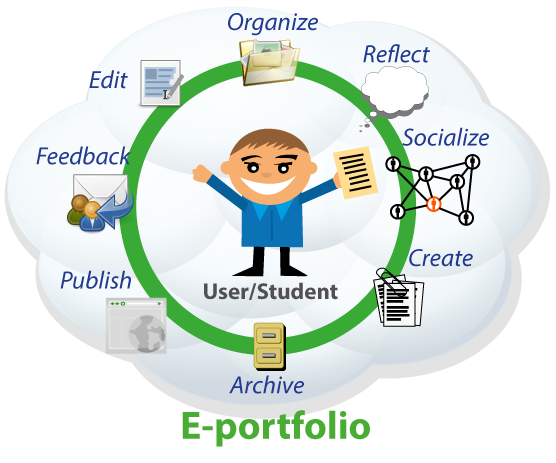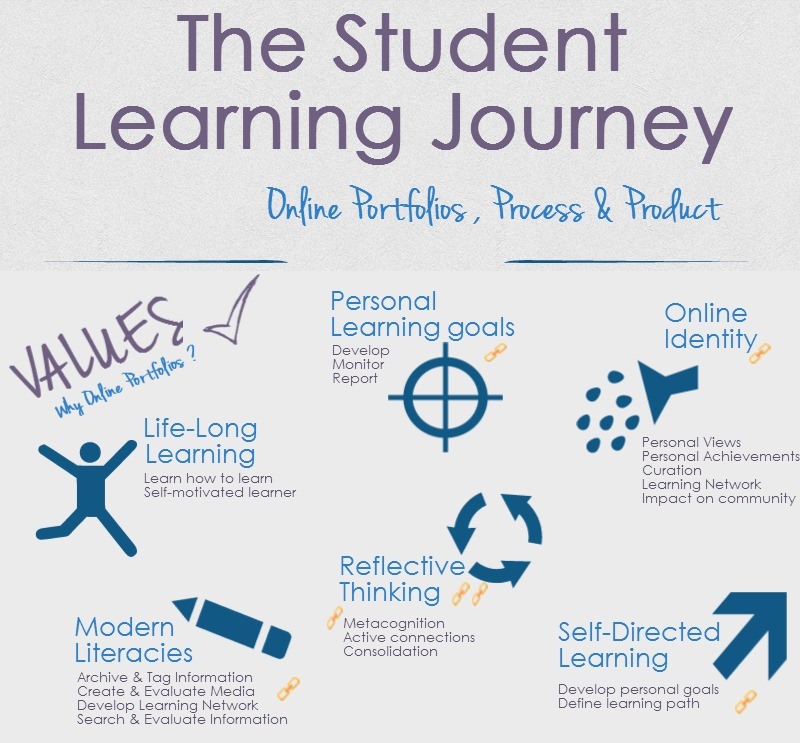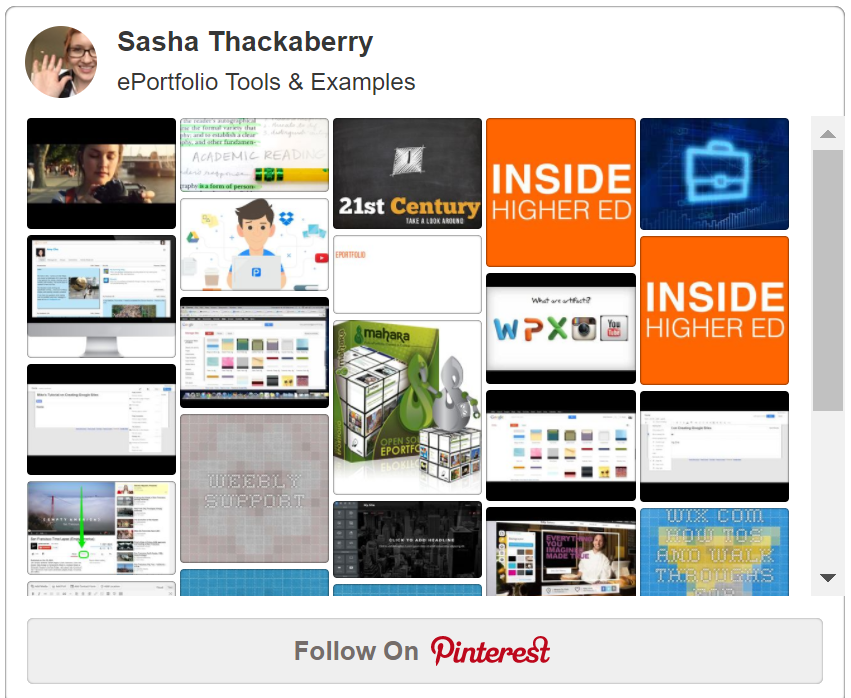An ePortfolio by any other name would likely be called a professional website, a blog, or a host of other names. The important thing is that the ePortfolio has several components – not dissimilar from eLearning 2.0.
This is one example of an ePortfolio – my own. Find it here at edusasha.com. When you check it out, try to discern the different components of it. What is posted there? How is it presented?
What do you like? What do you hate? Can you find what you’re looking for?
How is an ePortfolio different from a LinkedIn profile? (It is).
How is it different from a blog? (It is. It can include a blog or components of one, but it is different).

Core Elements of an ePortfolio
The ePortfolio can go beyond the basic elements, which need to be present regardless. An ePortfolio:
- Demonstrates professional competencies
- Houses work examples and product
- Shares reflections
- Makes goals explicit
- Curates content (which is a personal favorite, but which everyone does not agree on).
We’ll go into more detail on what content curation is, but for now just think of it as the curator at a museum – they decide what stays, and where it goes. They select what artworks to display together and for what reason. Content curation is much the same. What I like about this video on ePortfolios from Hong Kong University below (beyond the fact that it has good closed captioning and production values), is that it explains it fairly well from a competitive standpoint. You might not really be enthusiastic about an ePortfolio – but many of your competition for that next job will be. It’s becoming a necessity in the marketplace of higher education. If someone Googles you, what do they see above the fold? (What does “above the fold” mean?)
And Wikipedia says…
In what now has become the “ubiquitous wikipedia definition”, check out what a collaboration of individuals from around the world have co-created as a definition for ePortfolios.
Notice the associated links to PLEs (Personal Learning Environments), VLEs (Virtual Learning Environments), and Communities of Interest. Follow one link, and then follow another. See where the definition takes you.
Along the way, bookmark the links that you find. You’ll want to refer to them later when you create a glossary of eLearning terms (and when you use your social annotation tools!)

From: http:// media-cache-ec0.pinimg.com/236x/90/6b/fc/906bfc5d2816373b0aea411c5e8068ce.jpg
The social components of this aren’t necessary to add initially – we’ll be looking at creating the structure of the ePortfolio – a shell if you will. Later on we’ll add the rich social interactions through use of a social annotation bookmarking tool.
Demonstrating Professional Expertise
Demonstrating your professional achievements isn’t just about static work product. It’s about crafting an online identity, having a personal mission statement (think “elevator speech for my career and development”), and sharing your learning journey.
Isn’t just about static work product.
It IS about:
- Crafting an online identity
- Having a personal mission statement Sharing your learning journey.
- Your ePortfolio should be “future employer ready” at all times
- Don’t post things you don’t want an employer to see. Seriously. I’m not kidding. You’d be surprised you actually need to say that.
Instead of approaching an ePortfolio from a “student” perspective, with all the obligatory make-work that implies, try approaching it from a “continually developing high-achieving higher education administrator” perspective. Make this your professional presence, not your “student” one. This should be “future employer ready” at all times.
There are many free technologies for creating in ePortfolio. One of the main options is Google Sites – free, integrates with all other Google tools, and is also ad free. WordPress, which currently hosts 20% of the world’s websites, is free for the basic version, which puts ads right into your site. You can upgrade to ad-free for $30 a year. This is called a “Fremium” model. Most of the sites have this, with the exception of Google Sites (however the templates on Google Sites are not as sophisticated).
Any technology and hosting solution you’d like to use for your ePortfolio will work as long as it has the needed functionality. If you need help figuring out how to set one of the sites up, go to YouTube and search for videos that solve the problem you have.
Google Sites: sites.google.com
WordPress: wordpress.com
Wix.com: http://www.wix.com
Weebly: http://www.weebly.com
These tools are called WYSIWYG (or wiz-ee-wig). That means “What You See is What You Get.” In essence, it translates to a juiced-up text editor – things you’d intuitively be able to use provided you have a good grasp of Word and PPT and aren’t afraid of figuring out technology as you go.
What to use for your ePortfolio?
You can choose any tool and hosting service that you want for your ePortfolio/professional site. Below find a curated collection of resources to help you create a WordPress, wix, Weebly, or Google Site. There are also some news articles on ePortfolios, but you are not required to read all of those. These same resources are curated several ways (you only need to reference them if you need the assistance, and can choose if you prefer to access via Pintrest board, diigo outliner, or on this Google Doc.)
Interested in seeing what last year’s students created? Check out their excellent work product here: (shared with permission of course!)
- ePortfolios for the Higher Education Administrator (you are here)
- A Brief History of Distance Learning
- More on the History of Distance Learning
